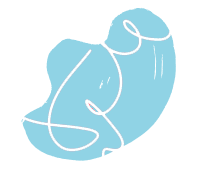
At Perfect Engineers, we specialize in the manufacturing and export of precision-engineered ball valves used in a wide range of industrial, commercial, and utility pipelines. Whether you’re handling water, oil, steam, gas, or aggressive chemicals, our valves are designed to deliver leak-proof performance, minimal maintenance, and long-lasting service in your system.
This page is not just a listing—it’s a full-scale buyer’s and engineer’s guide, carefully designed to meet all your awareness, commercial, and transactional search queries.



A ball valve is a mechanical shut-off device that uses a hollow, rotating ball to control the flow of fluids through a pipe. When the ball’s hole is in line with the pipe, flow occurs. A 90° turn of the handle rotates the ball, blocking flow entirely.
It’s the fastest and most reliable way to isolate fluid flow—and is preferred across industries for its tight sealing, easy operation, and robust build.
Here’s how a ball valve works in simple steps:
Simple 1/4-turn = fast shut-off.
Engineers often refer to this using P&ID symbols like:
Ball Valve Symbol: with a bar across (representing the bore)
| Parameter | Range / Details |
|---|---|
| Size Range | 1/4” to 12” |
| Pressure Class | PN10 to PN100 / Class 150–2500 |
| Temperature Range | -20°C to 250°C (up to 450°C on req.) |
| Connections | Screwed, Flanged, Socket Weld, Tri-Clamp |
| Operation Modes | Manual, Pneumatic, Electric |
| Flow Path | Full bore, Reduced bore, Multi-port |
+91-8591096714
sales@perfectengineersindia.com
www.perfectqrc.com
We manufacture and supply every type of ball valve classified as per:
At Perfect Engineers, we understand that every industry has its own unique media, pressure, temperature, and compliance requirements. That’s why we offer customized ball valve solutions for nearly every industrial
Ball valve selection is more than material and size—connection type plays a major role in installation, sealing reliability, system pressure, and maintenance. At Perfect Engineers, we offer every standard ball valve end connection
At Perfect Engineers, we believe informed buyers make better choices. Whether you’re specifying a valve for water, oil, steam, or chemical flow, it’s critical to understand the internal parts of a ball valve and how the materials used in each component affect performance, lifespan, and safety.
Looking to purchase industrial ball valves for your plant, project, or OEM system? Whether you’re a procurement head, maintenance manager, EPC contractor, or factory owner, this is your ultimate ball valve buying guide from India’s trusted supplier – Perfect Engineers.
Installing and maintaining industrial ball valves correctly is key to ensuring maximum safety, performance, and durability. Even the highest-quality valve can underperform if installed incorrectly or not maintained at proper intervals.
At Perfect Engineers, we don’t just manufacture valves—we deliver compliance, confidence, and performance. As a trusted name in industrial flow control, we ensure that every ball valve shipped from our facility meets the strictest quality standards, is tested and traceable, and is ready for use in global and regulated markets.
At Perfect Engineers, we believe in empowering B2B buyers with practical insights. That’s why this page provides a side-by-side comparison of different ball valve types, and real-world case studies to show how correct valve selection leads to measurable improvements in performance, reliability, and ROI.
Top entry ball valves allow internal access by removing the bonnet from the top—ideal for inline maintenance.
Side entry ball valves (most common) are assembled from the side and often require full removal for service.
We proudly export industrial ball valves to over 40+ countries, including:
UAE, Saudi Arabia, Qatar, Canada, Germany, Bangladesh, Sri Lanka, Indonesia, Kenya, South Korea, Oman, Nigeria, Ghana, Sudan, Italy, Bahrain, Japan, China, South Africa, Iraq, Uganda, and more
Mumbai, Delhi, Chennai, Ahmedabad, Pune, Baroda, Coimbatore, Ankleshwar, Mundra, Kolkata, Hyderabad, Jaipur, Bengaluru, Gurgaon, Tughlakabad, Dadri, Patparganj, Nellore
To start, stop, or redirect fluid flow in pipelines. Offers tight shut-off and fast operation.
A ball inside the valve rotates via handle or actuator. Its hole either allows or blocks flow.
Floating, Trunnion, 3-Way, and Full Bore.
Floating ball is supported by seats. Trunnion ball is fixed and can handle higher pressure.
Ball valves are faster, leak-proof, and better for automation. Gate valves are better for throttling.
Only V-port or segmented ball valves are suitable for flow control.
Typically refers to 2-way, two-piece construction valves used for isolation.
Allows one-way flow, prevents reverse flow—used in pumping systems.
T-Port allows mixing/diverting. L-Port allows flow selection between two paths.
Lightweight, cost-effective, corrosion-resistant for water/agriculture/chemical lines.
A PVC valve with slip socket ends for easy solvent welding.
Temperature Pressure Relief valve – NOT a ball valve, but used in safety systems.
Yes, many models come with LOTO (Lockout-Tagout) locking hole on handle.
Hydrostatic (water) or pneumatic testing per API 598 / ISO 5208.
Worn seats, damaged stem seals, over-torquing, or wrong material choice.
The handle or lever used to manually operate the valve.
10–15 years in ideal conditions. Some SS valves last longer with PTFE seats.
Look at end connection size or check marking (e.g., 1”, 2”, DN25).
Yes—especially 3-piece valves where seats/seals can be replaced.
Circle with a line (open), or a cross line (closed), often with handle direction shown.
WhatsApp us